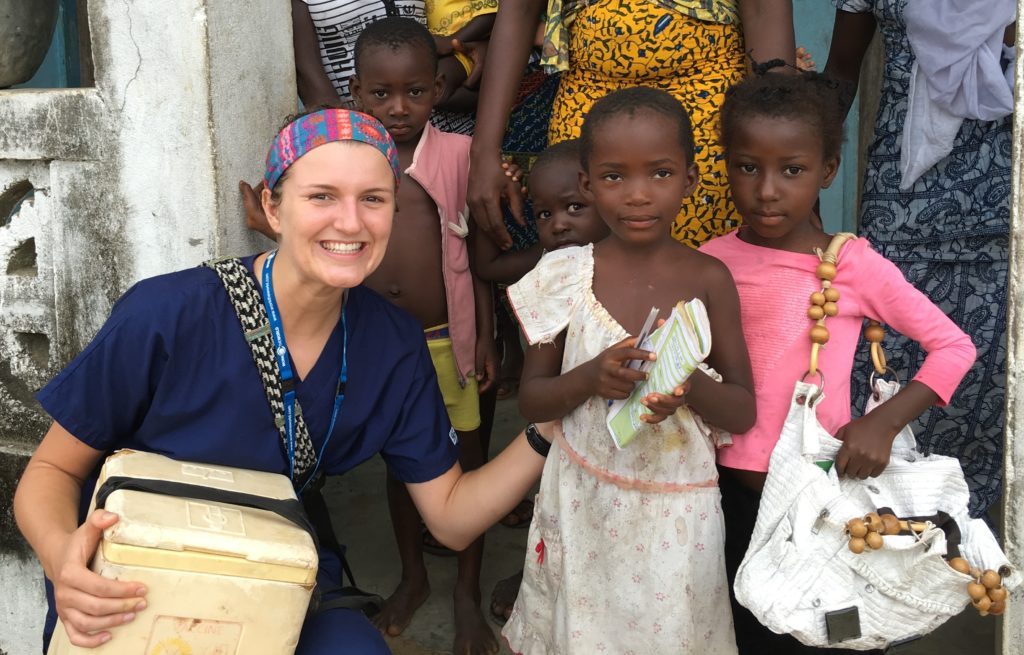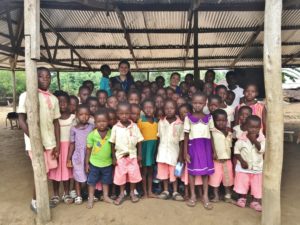
by Emily Davis
I stood adjacent to the delivery chair as the mother-to-be moaned in pain with quickening contractions. Time passed. Her labor was prolonged. The two midwives stood ready, instructing the woman to push.
At last we saw his head, face, then a shoulder and the rest of his tiny new body that followed. A moment of silence. I stood in anxious expectation as the midwives massaged his back and tried to coax a sound from the newborn. Finally, a cry rang out across the room and I relaxed, finding it impossible to contain a smile at the sound of this sweet new life.
Earlier this summer, I spent seven weeks in Takoradi, Ghana on a nursing clinical placement. I worked and observed in the district and regional hospitals as well as at a clinic in a nearby village. During my time in the hospital, I worked in the prenatal clinic, the obstetrics and gynecology department, the labor ward and the postnatal clinic. I saw women through their entire pregnancies, including prenatal consultations, admissions to the gynecology unit for complications, their labor and deliveries and the postnatal check-ups for their babies. While I was in the village, I did countless rapid tests for malaria and treated many patients, checked vitals, taught health education in schools and assisted the nurse who provided immunizations to kids.
In the prenatal consultations, I saw “PPH” written on the charts of many women, indicating their history of postpartum hemorrhaging with previous pregnancies. I also watched time and again as newborns were whisked off immediately after birth. Here in the United States, we emphasize the importance of skin-to-skin contact between mom and baby right after birth. I noticed this was not practiced at the hospital in Ghana and I asked one of the midwives why this was the case. Her response was that mothers do not start forming a bond immediately with their child because so often the child does not make it.
It doesn’t have to be this way.
While significant progress has been made in reducing maternal and child mortality in Ghana over the past 20 years, there is still a long way to go. According to the United Nations 2015 Ghana report on the Millennial Development Goals, the maternal mortality rate has decreased from 760 to 380 maternal deaths per 100,000 live births from the year 1990 to 2013. Some of the interventions contributing to this decline are the increased specific training in various skills for midwives, increase in antenatal care, as well as an emphasis on family planning.
In the clinic and at the hospital where we worked, there were posters provided by global health organizations all over the walls encouraging families to take proper family planning measures as well as posters providing general maternal health information. The posters served as reminders and additional sources of education for the women.

According to the same 2015 report, the mortality rate for kids under the age of five has also decreased, from 122 to 82 deaths per 1,000 live births. One of the biggest contributors to this decrease in child mortality is the increase in provision of immunizations. I had the chance to go with the nurses from the village clinic to do an outreach in the neighboring village where we set up in a central area and moms brought their young children, who were given up-to-date immunizations by the nurses.
This past semester, I had the opportunity to attend Save the Children and Save the Children Action Network’s (SCAN) Advocacy Summit in Washington D.C., where we met with members of Congress to talk about preventable maternal and child health issues, many of which were issues I would experience firsthand only a few months later while in Ghana.
From pregnancy-related complications to children suffering from malnutrition, I saw a wide variety of issues that threaten the health of moms and kids. Although Save the Children does not currently have any programs for moms and kids in Ghana, I was able to put names and faces to the health issues we see in other developing countries across Africa and beyond.
Lawmakers have the opportunity to play a part in ending these preventable deaths and we have the opportunity to advocate for this change.